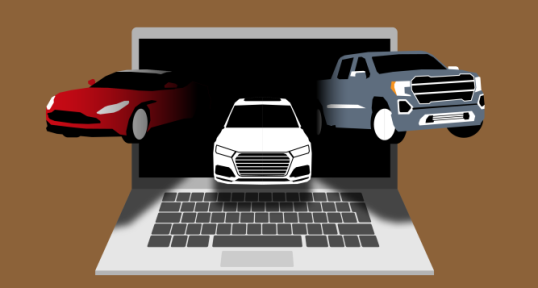The affinity for small, nimble, and more efficient transportation is taking hold worldwide, and that’s given rise to the increase in two-wheel mobility. In addition to motorcycles and pedal-powered bicycles, e-bikes and e-scooters have sprung into popularity and gained appeal as short-distance micromobility solutions. The rise of two-wheeled transportation has opened the door to new ways of engaging riders in similar ways to drivers with their car HMI, or human-machine interfaces.
What do HMI trends look like for the two-wheeler industries? In an area that’s been underserved, especially compared to vehicle HMI developments, there’s plenty of opportunity for tech to flourish for riders on two wheels.
Locate Charging Stations
Whether for motorcycles like electric Harley-Davidsons or Damon motorcycles or micromobility options like e-scooters and e-bikes, the trend is overwhelmingly leaning toward electrification. Clean battery-powered vehicles elevate the already impressive efficiency two-wheelers offer, but they require time and locations to recharge.
For EVs, vehicle HMI integrates various options for finding points of interest, including charging stations. That’s not as prevalent for two-wheel mobility options and, while some e-motorcycles use DC fast charging as EV cars can, it’s not a protocol all options share. Integrating charging solutions for bike or scooter stations can unlock one of the biggest obstacles to ridership, whether smartphone-based or instrument cluster integration.
Voice and Gesture HMI
For any vehicle on two wheels, keeping your hands on the handlebars and your eyes on the road are crucial for safe riding – even more so than driving a car. Limiting distractions and reasons to either take a hand off the grip or look away from the road requires industry-specific HMI design.
Like driving a car, glancing away from the road or path, or lifting a hand from the handlebars is going to happen, but the instances can be shorter and less distracting. With functionality limited, smartphones or motorcycle gauge displays can integrate gesture recognition or eye movements to perform functions. Even better, voice recognition can allow the rider to perform functions like requesting directions or parking without glancing away at all.
Safety-Centric Development
The automotive industry has developers feverishly working to improve safety with the goal of preventing accidents and collision-related fatalities. It’s even more important when you’re on a vehicle that doesn’t have a complete structure encasing you, equipped with airbags and crumple zones. Two-wheelers haven’t seen the same level of advancement, but it’s in the works.
Two-wheeler HMI design can integrate some of the same safety systems that cars have like pedestrian detection and collision avoidance systems. The sensors necessary are becoming more affordable to build into motorcycles especially, and GPS location services may be able to help riders on bikes and e-scooters avoid accidents using telematics and V2X tech developed by automotive and mobility consulting services.
User-Focused Assistant
Saying, “Okay Google” and “Hey Siri” has become part of the vernacular for most people, but it hasn’t necessarily been applied to the two-wheel mobility industry. It’s partly due to difficulty with background noise in open-air settings, and at least slightly due to a purist’s approach to travel. However, an assistant that can perform tasks with verbal commands comes in extremely beneficial on two wheels.
Particularly useful with microphone-equipped helmets, it’s possible to customize common ecosystems to ask for turn-by-turn directions, listen to the weather, turn on the heated handlebars, or place a call. While common for drivers, it’s an integration that’s new for riders on two wheels.
These developments take investment in product design consulting and implementation by companies like Star. And in the next few years, as the two-wheel industry flourishes, you’ll see new and exciting tech come out that makes it safer and more convenient.
Follow Techdee for more!
